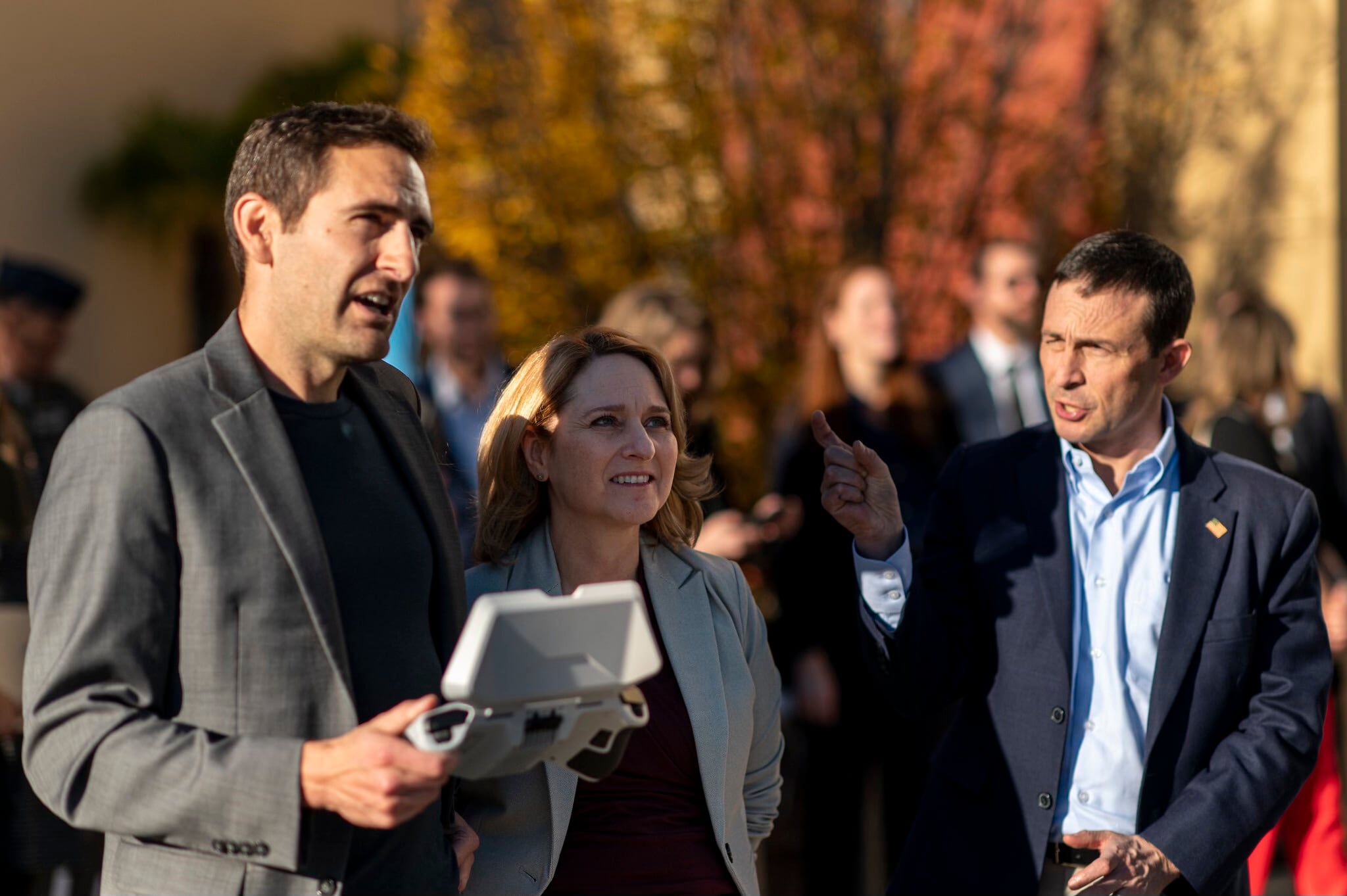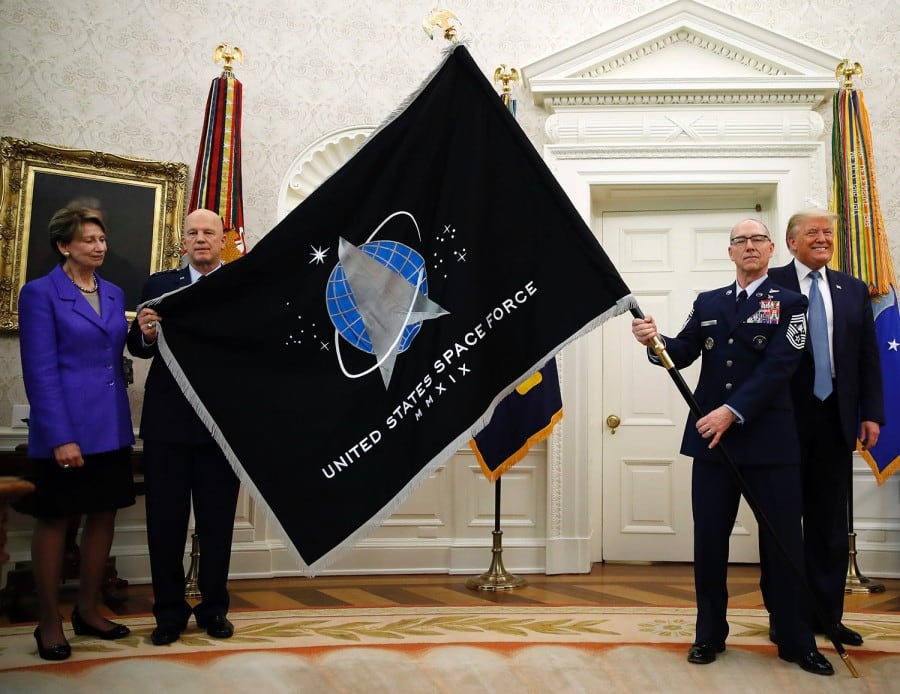
90.0000° N, 135.0000° W
Hypersonic Santa Claus is a myth 64 years in the making.
Let me quickly set aside any preconceptions about the benevolent Christmas entity, based on the historical personage of a third century Greek bishop. Hypersonic Santa Claus, as I like to call him, is the version that NORAD publicly tracks every year. He is a mythological being that is just one birthday shy of eligibility for social security.
The creation of Hypersonic Santa, who could also go by Cold War Santa or Atomic Defense Santa, is a fascinating insight into the needs and perceptions of the United States military in the 1950s. The endurance of the idea is a testament to the hegemony of baby boomer childhoods over Christmas popular culture, and also the difficulty of message around nuclear deterrence.
I’m Kelsey D. Atherton, reporting from Albuquerque, New Mexico, and I am here to interrupt this Christmas Eve with talk of weapons designed to deliver the opposites of peace on earth and goodwill to men.
The best popular chronology of Hypersonic Santa comes from 2014, in an article titled “How the U.S. Military Turned Santa Claus Into a Cold War Icon”. A few facts of the popular myth are mostly true: in 1955, a child dialed a wrong number, connecting them to Continental Air Defense Command (CONAD) Col.Harry Shoup. When the kid asked about Santa, Shoup instead warned about other threats coming across the North Pole.
From that beginning, CONAD, and then NORAD, have popularized and maintained a story and a public role in tracking Hypersonic Santa. It is one of the most successful deliberate creations of a myth in recent times, finding a way to dress the second-strike command apparatus for a nightmarish nuclear war in a spirit of whimsy and joy.
It also, by near accident, solved a challenge of public perception in the early Cold War: how can the Air Force convey to the public that it is vulnerable to a threat never before known and protected against?
Shoup’s initial answer, at least at recorded by the Pasadena Independent newspaper, hit at the heart of early Cold War fear. Devastating bombs, carried by planes flying across the top of the globe, could wreck cities in a way only Hiroshima and Nagasaki had previously experienced. Within a few years of when CONAD was stood up, the threat expanded beyond bombers to include missiles, a place it has remained ever since.
CONAD may be best-remembered for adding “route tracked annually by the U.S. military” to the mythology of Santa, but its other legacy is one of an acute sense of vulnerability, and a desire to engineer a way out of it. While CONAD could marshal fighters and the nuclear-tipped BOMARC surface-to-air missiles against bombers, ballistic missiles traveled too fast, and from so far away, that they needed to be tracked differently and stopped by a technology that did not yet exist in the 1950s. Today, only the first half of that problem has been reliably solved, and hypersonic weapons threaten to undo even that. The military and intelligence community have many more tools for detecting the launch of a ballistic missile in time for humans to make a decision about how to respond. The options for interception remain unreliable, at best, despite billions of dollars of testing and decades of development.
The origins of Hypersonic Santa are worth keeping in mind in a new era of missile testing and development. While hypersonic missiles combine the hard-to-track trajectories of cruise missiles with the speed of ICBMs, the public perception remains that NORAD, capable of tracking the incredibly fast-moving Santa Claus, is already on top of it.
CONAD told kids it was tracking Santa before it was capable of tracking incoming ballistic missiles. This year, NORAD will indulge the myth of a tracked hypersonic sleigh, while omitting the reality that it operates a defense network not yet able to track hypersonic missiles.
Joyeaux missile.
° 1. DRONE OF FUTURE PAST
In August 2017, the Army banned the use of all drones made by DJI, a China-based hobbyist drone giant. At the time, a public Army memo cited a then-unreleased Navy memo as the justification for why. It claimed the Navy had uncovered significant cyber risk in the drones. Last week, the Cybervault project of the National Security Archive published the 2017 Navy memo on the risks found in DJI drones. That memo discusses cyber risks, and then outlines a series of mitigation steps that would be common for any off-the-shelf piece of technology which connects to the internet. As historical documents, the Navy and Army memos provide a small window into how the services handle and share news of risk about the same item. As more and more commercial technology provides useful capabilities to military users, figuring out how to match the cheap cost with the inherent risks in off-the-shelf tools will be a big task for services navigating the future.
° 2. AI OF FUTURE PRESENT
To maintain present levels of military dominance in the future, the Pentagon plans to incorporate more artificial intelligence, that catch-all term for code which can interpret data and respond in novel and useful ways. As a whole category and approach to software AI is big, and takes some technical knowledge and vision to implement. A report by RAND, published this month, finds that the Pentagon’s planning for AI is lacking and incoherent, and recommends a series of policy steps to make it easier for the Department of Defense to plan for an AI future. The best news for the military and policy makers from the report is that there is much easy work ahead, largely in terms of vision and coordination, that can set in motion a more accomplished AI future soon.
° 3. DOCTRINE OF FUTURE PERFECT
The United States does not yet have an official policy barring the use or development of lethal autonomous weapons. A Department of Defense directive, published in 2012, reads as though the U.S. will not develop such weapons. According to conversations that took place in a private meeting of think tankers and policy makers, the notion that the directive, known as DoDD 3000.09, bans autonomous weapons is wrong. This disparity between the public perception of the document and the view held by former policy makers is one that is hard to reconcile without explicit clarification from the Secretary of Defense.
° 4. AN ACRONYM IN AN ACRONYM IN AN ACRONYM IN AN ACRONYM
Normally this part of the newsletter strives to showcase a backronym, or how a program gets bent into a familiar term. This fortnight, instead, we will look at a term from satellite communications, as highlighted by Catherine Schmid on Twitter. “RARS” stands for the "Regional ATOVS Retransmission Service;" ATOVS is "Advanced TOVS;" TOVS is "TIROS operational vertical sounder;" TIROS is "Television infrared observational satellite."
Or, as Schmid puts it, RARS can also be written R(A{[TIOS]OVS})RS, for “Regional Advanced Television Infrared Observational Satellite Operational Vertical Sounder Retransmission Service.”
What a gift, that acronym! It is a nesting doll of meaning, folded into four tidy letters or an awkward paragraph of explanation.
That’s all for this week, my Tomorrow Warthogs. Merry Christmas, if you celebrate, and a happy holiday season or winter day, regardless. Any questions about the way nebulas obscure hyperspace signatures, or how compact a Death Star style cannon can really get, email me at katherton@c4isrnet.com.





